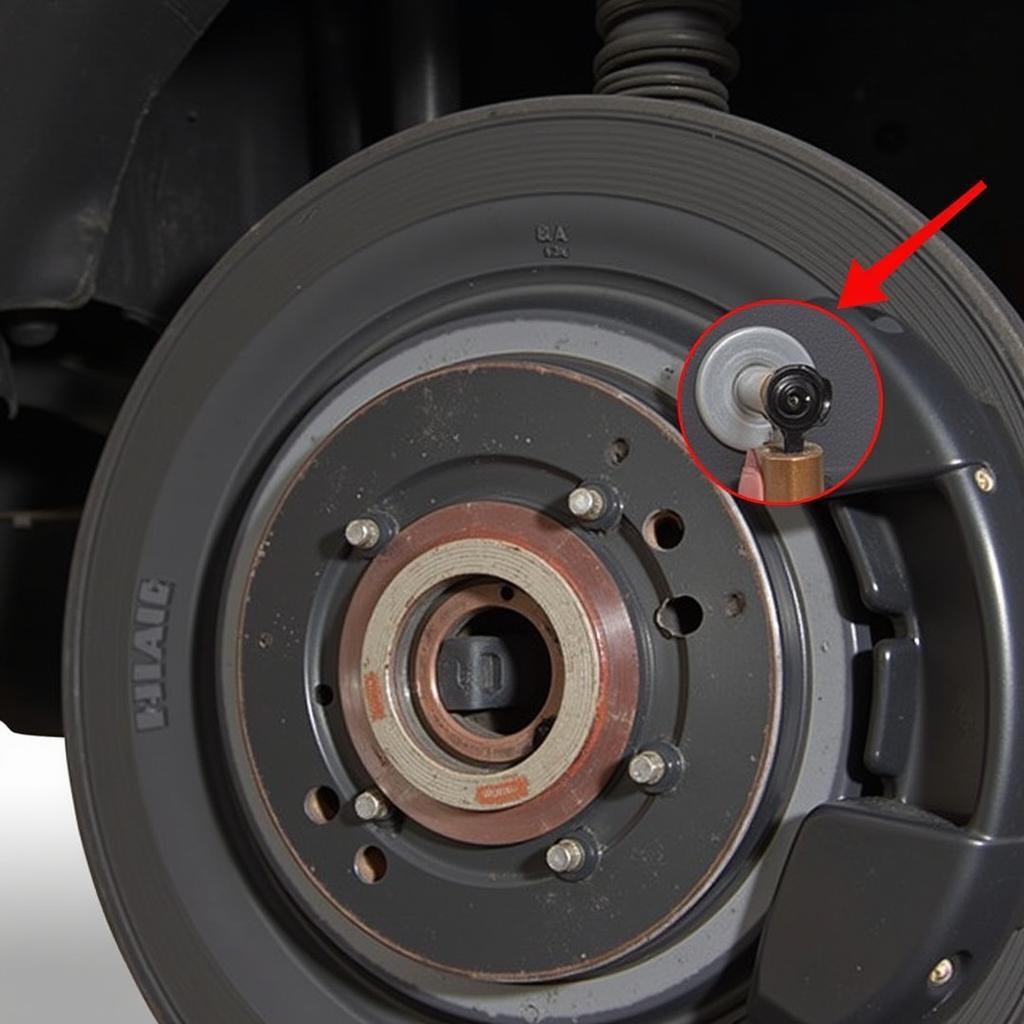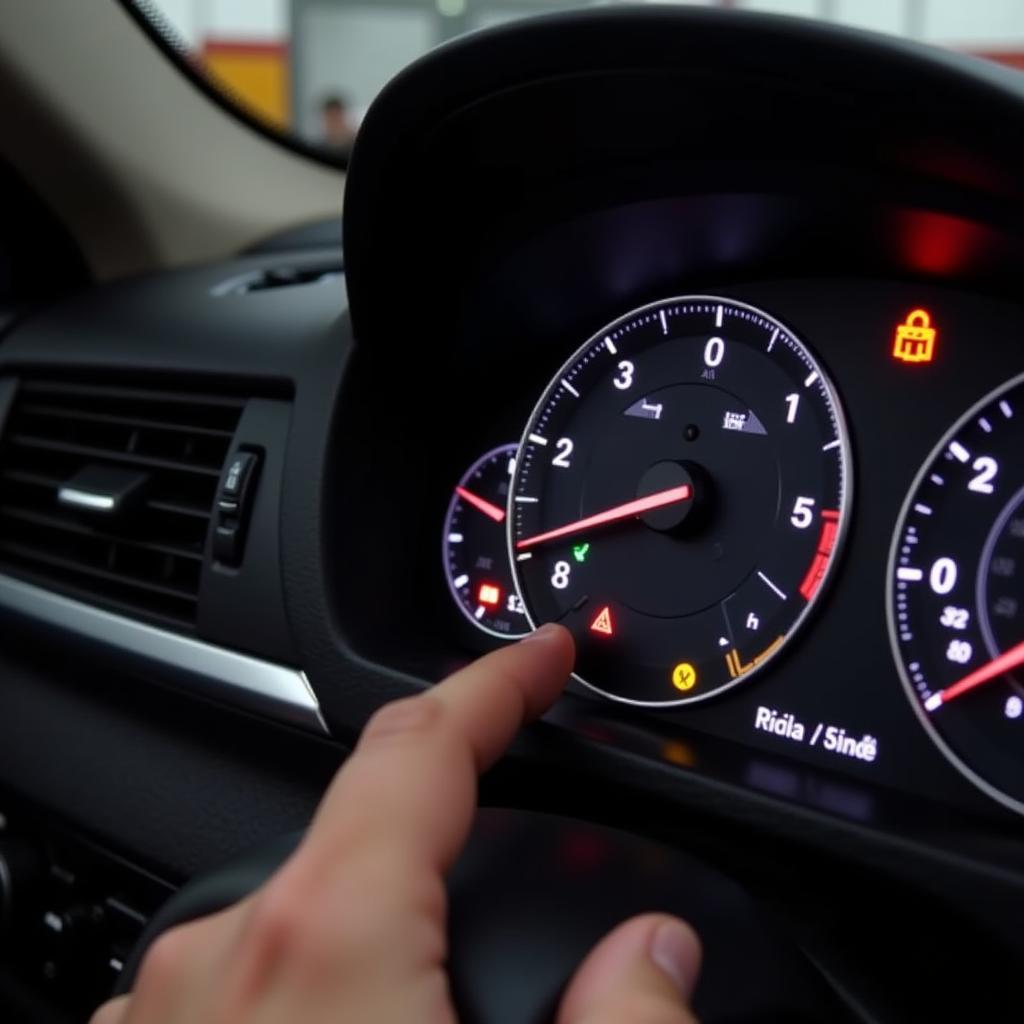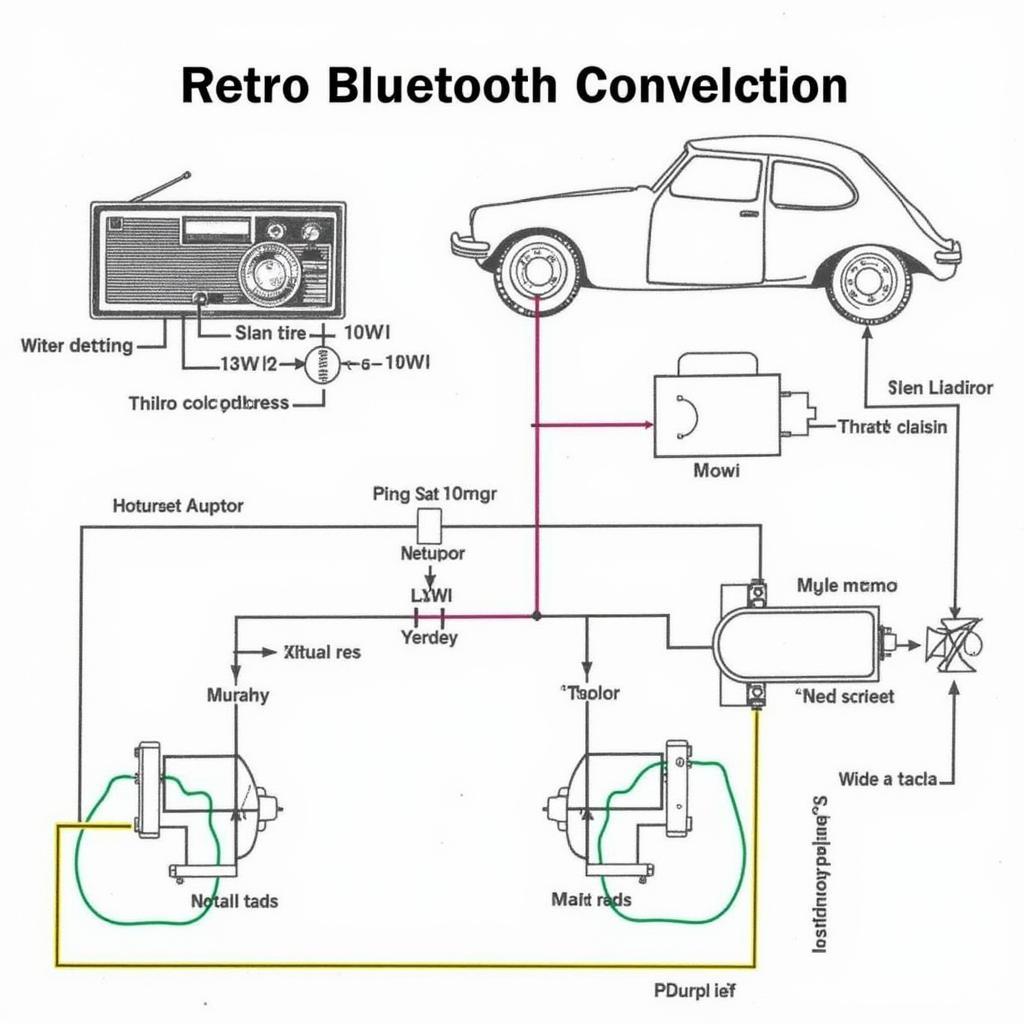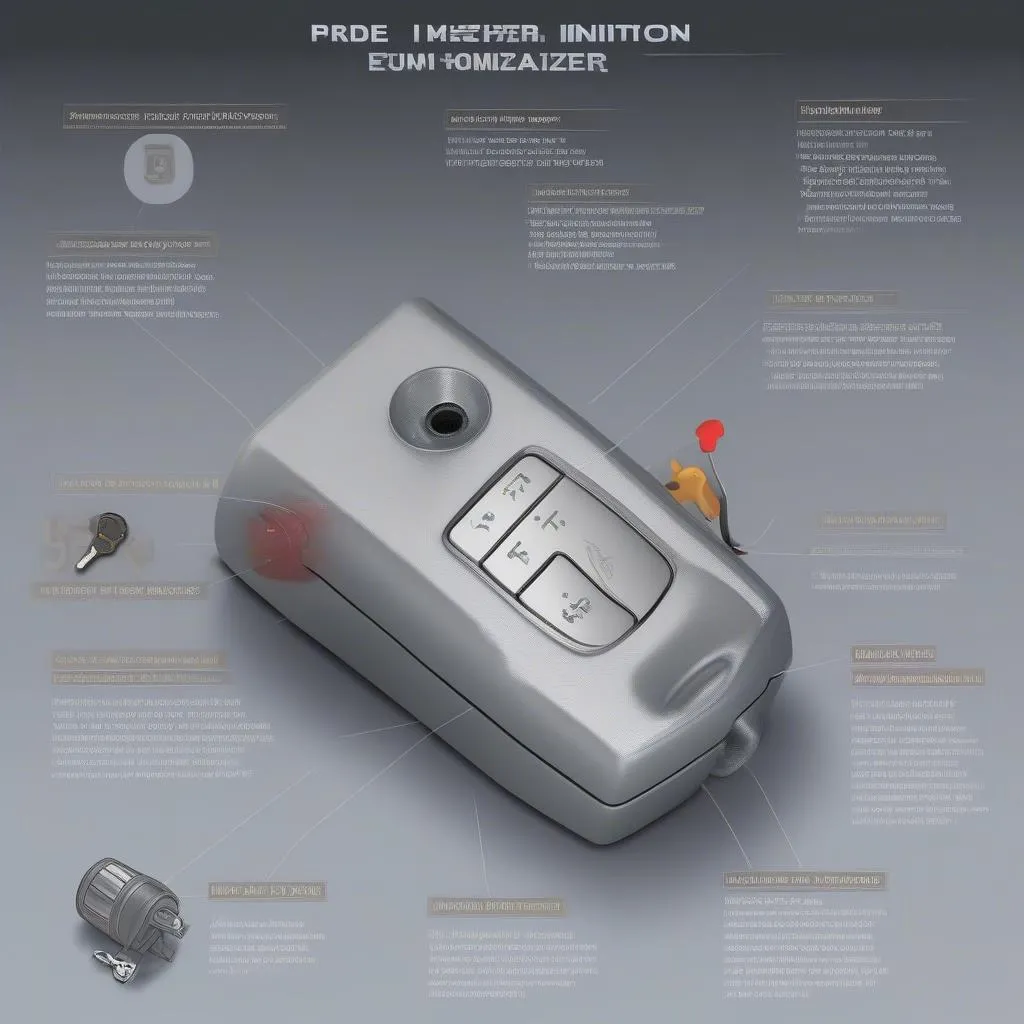The dreaded brake pad warning light on your BMW 318i dashboard can be a nuisance, but it’s a crucial safety indicator you should never ignore. This comprehensive guide will walk you through the reasons behind this warning, how to diagnose the problem, and the steps to reset the light, empowering you to take charge of your BMW’s braking system.
Understanding the BMW 318i Brake Pad Warning Light
Your BMW 318i is equipped with a sophisticated electronic system that monitors the condition of your brake pads. When the brake pad wear sensors detect the pads have thinned beyond a safe limit, the brake pad warning light illuminates on your dashboard. This is a clear signal that it’s time to inspect and potentially replace your brake pads to ensure optimal braking performance and safety.
Common Causes of the Brake Pad Warning Light
While worn brake pads are the most common culprit, other factors can trigger the brake pad warning light on your BMW 318i. These include:
- Worn brake pad wear sensors: The sensors themselves can wear out or become damaged over time, triggering a false warning.
- Faulty brake pad sensor wiring: Damaged or corroded wiring connecting the sensors to the vehicle’s electrical system can disrupt the signal, leading to an inaccurate warning.
- Issues with the brake fluid level: Low brake fluid, often caused by leaks in the braking system, can trigger the warning light as a safety precaution.
- Problems with the ABS system: While less common, issues with the Anti-lock Braking System (ABS) can also trigger the brake pad warning light.
 BMW 318i Brake Pad Sensor
BMW 318i Brake Pad Sensor
Diagnosing the Problem
Before resetting the brake pad warning light on your BMW 318i, it’s essential to accurately diagnose the root cause to avoid compromising safety:
- Inspect the brake pads: Visually inspect the brake pads through the spaces between the wheel spokes. If the pad material is thinner than 1/4 inch, they are likely due for replacement.
- Check the brake pad wear sensor: Examine the brake pad wear sensor wires for any signs of damage, fraying, or corrosion. If damaged, the sensor will need to be replaced.
- Inspect brake fluid level: Locate the brake fluid reservoir and check the fluid level. If it’s below the minimum mark, there might be a leak in the system that needs immediate attention.
- Consult a professional mechanic: If you are uncomfortable performing these inspections yourself, or if you suspect an issue with the ABS system, it’s best to consult a qualified mechanic specializing in BMWs.
Resetting the BMW 318i Brake Pad Warning Light
Once you have addressed the underlying issue causing the brake pad warning light, you can proceed to reset the light. While the exact method might vary slightly depending on the model year of your BMW 318i, here’s a general procedure:
Important: Ensure the ignition is switched off before proceeding with the reset procedure.
- Locate the service reset button: This button is typically located on the instrument cluster, often near the speedometer or tachometer. It might be labeled as “Service,” “Reset,” or have a clock symbol.
- Press and hold the reset button: While pressing and holding the button, turn the ignition on, but do not start the engine.
- Continue holding the button: Keep holding the reset button for approximately 5-10 seconds.
- Observe the instrument cluster: The service indicator light should begin to flash, indicating that the reset process has been initiated.
- Release the reset button: Once the light stops flashing and remains illuminated, release the button.
- Turn off the ignition: Switch off the ignition and wait for a few seconds.
- Turn the ignition back on: Start your BMW 318i as you normally would, and verify that the brake pad warning light has been successfully reset.
 Resetting Brake Pad Light BMW 318i
Resetting Brake Pad Light BMW 318i
Note: If the warning light persists after attempting the reset procedure, there might be a lingering issue with your brake system that requires further diagnosis by a qualified mechanic.
Tips for Prolonging Brake Pad Life
Extending the lifespan of your brake pads not only saves you money in the long run but also enhances your safety on the road. Here are some valuable tips:
- Practice smooth braking: Avoid hard braking whenever possible, as this puts excessive stress on the brake pads and accelerates wear.
- Maintain a safe following distance: Keeping a safe distance from the vehicle in front provides ample time to brake gradually, reducing unnecessary wear and tear on your brakes.
- Lighten your load: Carrying excessive weight in your BMW 318i increases the workload on the braking system, leading to faster brake pad wear.
- Use engine braking: When driving downhill or slowing down, downshifting to a lower gear allows the engine to assist in braking, reducing the strain on your brake pads.
Frequently Asked Questions
Q: Can I drive with the brake pad warning light on?
A: While it’s technically possible to drive a short distance with the brake pad warning light on, it’s highly discouraged. Ignoring the warning light can lead to further damage to the braking system, compromising safety.
Q: How often should I replace my BMW 318i’s brake pads?
A: Brake pad lifespan varies depending on driving habits and conditions. However, as a general rule, it’s recommended to have your brake pads inspected every 10,000-12,000 miles and replaced as needed.
Q: Can I replace my BMW 318i’s brake pads myself?
A: Replacing brake pads requires mechanical knowledge and specialized tools. If you’re not comfortable working on your vehicle’s braking system, it’s recommended to have the replacement performed by a qualified mechanic.
Q: Is it necessary to replace the rotors when replacing the brake pads?
A: While not always mandatory, it’s generally recommended to have the rotors machined or replaced when installing new brake pads to ensure optimal braking performance and prevent premature pad wear.
Q: Why is my brake pedal pulsating after resetting the warning light?
A: A pulsating brake pedal can indicate warped brake rotors, which often occur due to excessive heat. Consult a mechanic to inspect and potentially resurface or replace the rotors.
Conclusion
Addressing the BMW 318i brake pad warning light promptly is crucial for maintaining optimal braking performance and ensuring your safety on the road. By understanding the potential causes, performing proper diagnosis, and knowing how to reset the light, you can confidently address this common issue and enjoy peace of mind knowing your BMW’s braking system is in top condition. If you have any doubts or encounter persistent issues, don’t hesitate to seek assistance from a qualified BMW mechanic. For insights into similar issues with other car models, you can refer to our guides on e36 brake pad warning or brake system warning light honda civic.


